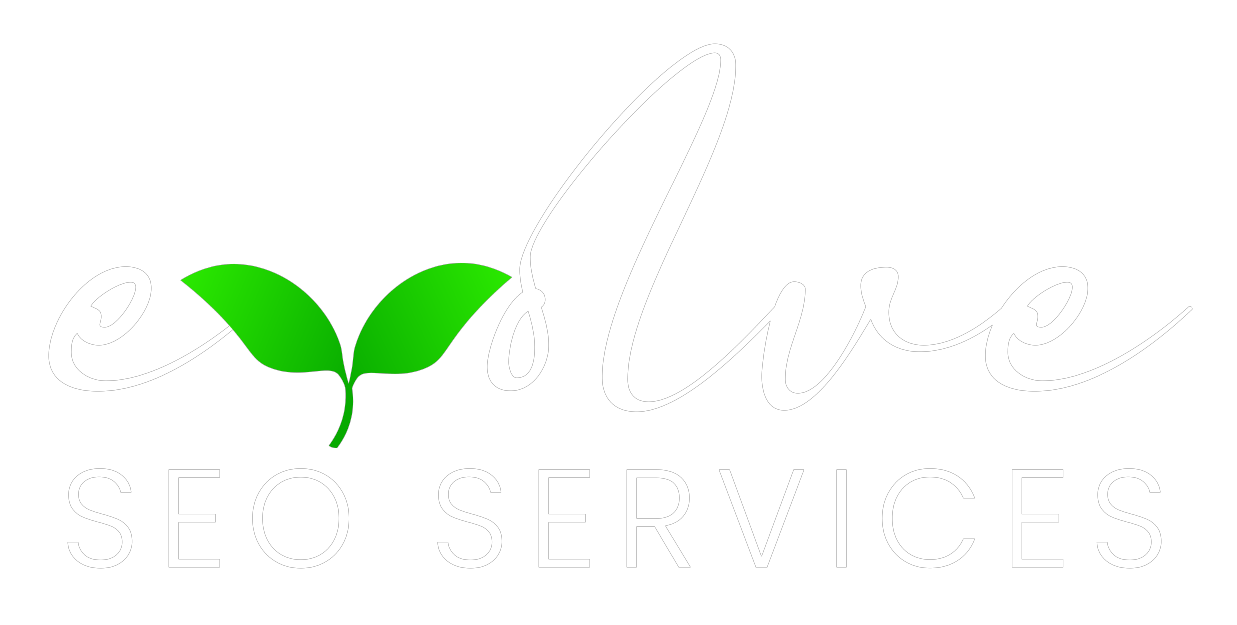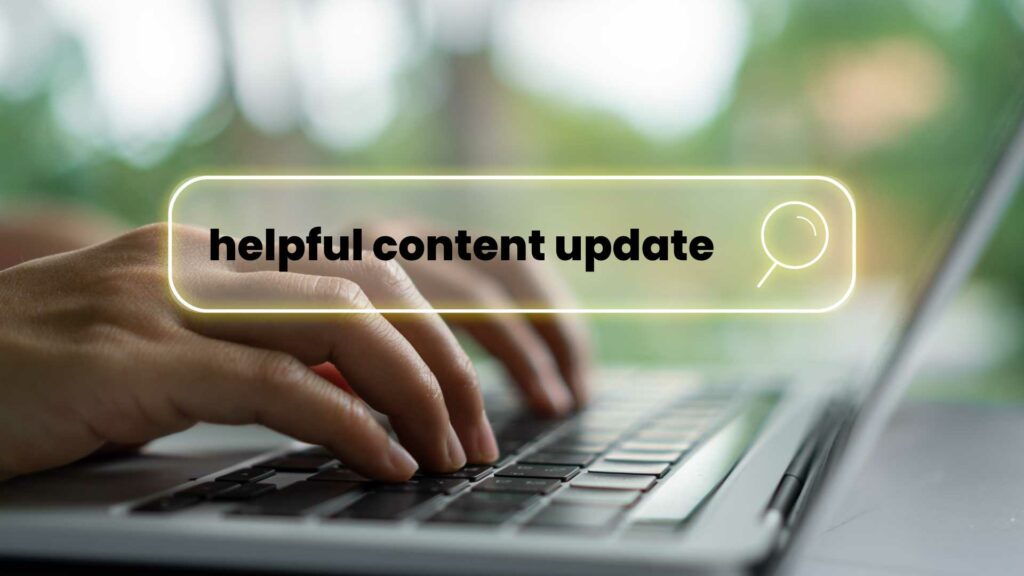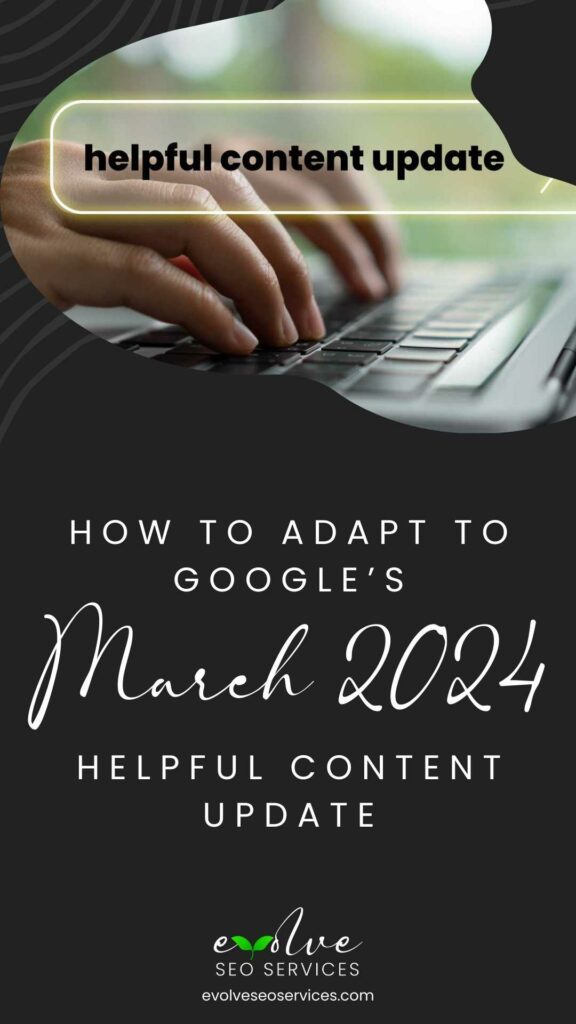Key Takeaways
How to Stay Aligned with Google’s March 2024 Helpful Content Update:
- Emphasize original, high-quality content.
- Avoid leveraging aged domains for low-quality content.
- Follow ethical, thoughtful practices during content creation, ensuring originality and value.
- Maintain transparency and user-first practices in SEO strategies.
Table of Contents
How to Adapt to Google’s March 2024 Helpful Content Update
If you are a savvy SEO or digital marketing professional, Google’s latest Helpful Content Update, rolled out on March 5, 2024, should come as no surprise. For years, we’ve watched gray and black hat SEO peddlers come up with new ways to manipulate the search results. Hidden doorways to spammy websites, concealed keyword stuffing, and fake, bot-driven traffic once posed very real threats to internet searchers, and now they are, for the most part, things of the past.
In the age of mass-produced, low quality content, Google is doing its part once again to protect the public against those who have less-than-honorable intentions. But what does the March 2024 helpful content really mean for SEO professionals and their clients?
The good news is that if you’re already doing all the right things—producing high quality content, building legitimate backlinks, and maintaining your website’s security and performance—you can rest easy. This update shouldn’t affect your site much in the long run. However, if you’ve been purchasing aged domains with the intention of boosting cheap content, abusing mass-produced content farms or AI generators, or using a site with a good reputation to boost spammy content, beware.
First Things First: What is Google’s “Helpful Content Update”?
Google’s “Helpful Content Update” is a significant algorithm change aimed at rewarding content that provides genuine value to users while penalizing content that seems to have been created primarily to rank well in search engines rather than to help or inform people. This update is part of Google’s ongoing effort to ensure that the user experience remains at the forefront of its search services.
The core idea behind this update is to emphasize the importance of creating content that is first and foremost designed for humans, not algorithms. Google wants to ensure that the content people find through its search engine is engaging, informative, and directly responsive to their queries. This means that content creators should focus on understanding their audience’s needs and crafting content that addresses those needs in a meaningful way.
With the “Helpful Content Update,” Google uses a set of signals to determine whether a piece of content is likely to be helpful and satisfying to users. These signals might include factors such as the depth of the information provided, how well the content matches the search intent, and whether the content provides a comprehensive answer to the query.
For businesses and content creators, this update underscores the importance of focusing on quality over quantity. It encourages the production of original content that reflects expertise, authoritativeness, and trustworthiness. To thrive in a post-update search landscape, creators should aim to produce content that is not only SEO-friendly but also genuinely useful and engaging for their target audience.
In essence, the “Helpful Content Update” is Google’s way of ensuring that the content it ranks highly is the content that best serves the needs of its users, thereby improving the overall search experience. This update aligns with Google’s broader mission to organize the world’s information and make it universally accessible and useful.
What’s In Google’s March 2024 Helpful Content Update?
The End of the “Aged Domain” Era
Gone are the days when securing an aged domain could provide a shortcut to search engine prominence for low-quality content. This latest update from Google makes it abundantly clear: the intrinsic value of your content reigns supreme, regardless of the domain’s age. If your content strategy hinges on leveraging an aged domain to buoy subpar content, it’s time for a recalibration.
Here is the direct quote from the blog post from Google announcing the March 2024 helpful content update:
“Occasionally, expired domains are purchased and repurposed with the primary intention of boosting search ranking of low-quality or unoriginal content. This can mislead users into thinking the new content is part of the older site, which may not be the case. Expired domains that are purchased and repurposed with the intention of boosting the search ranking of low-quality content are now considered spam.” – Elizabeth Tucker, Director of Product Management at Google
So is purchasing an aged domain frowned upon in general? Not necessarily. It depends on your intentions behind the purchase. If you’re planning on using your shiny new (old) domain to promote high quality content, relax. You’re in the clear, as long as you alert your users in no uncertain terms that the content of the new site is not affiliated with the old domain owners in any way and is not intended to represent their views or company/products.
Transparency will act as your north star when tailoring your SEO strategy in 2024.
The Crackdown on “Scaled Content Abuse”
In a move that reinforces Google’s commitment to quality, the update takes a firm stance against unchecked automation, or as they call it, “scaled content abuse.” The creation of low-quality, mass-produced content, devoid of original insights or perspectives, now stands as a futile endeavor in the quest for search engine visibility.
“We’re strengthening our policy to focus on this abusive behavior — producing content at scale to boost search ranking — whether automation, humans or a combination are involved. This will allow us to take action on more types of content with little to no value created at scale, like pages that pretend to have answers to popular searches but fail to deliver helpful content.” – Elizabeth Tucker, Director of Product Management at Google
According to the Spam Policies for Google Web Search update, examples of scaled content abuse include:
- Using generative AI tools or other similar tools to generate many pages without adding value for users
- Scraping feeds, search results, or other content to generate many pages (including through automated transformations like synonymizing, translating, or other obfuscation techniques), where little value is provided to users
- Stitching or combining content from different web pages without adding value
- Creating multiple sites with the intent of hiding the scaled nature of the content
- Creating many pages where the content makes little or no sense to a reader but contains search keywords
If you use a system that automatically spins up content for you, or you’ve hired someone to crank out regurgitated low-quality content, and you don’t intend to QA or monitor that content, save your money. That approach won’t work anymore.
Instead, employing the ethical use of AI in SEO and content creation is still a valid approach. If you’re using generative AI or content automation, consider implementing the following QA process:
- Initial Review:
- Read the article thoroughly to understand the content and context.
- Check for adherence to the topic and relevancy.
- Grammar and Language Check:
- Use a grammar checking tool (e.g., QuillBot, Grammarly, Hemingway Editor) to identify and correct grammatical errors.
- Ensure the article is clear, concise, and free of jargon.
- Check for consistent tone and voice appropriate for the target audience.
- SEO Optimization:
- Ensure the article includes relevant keywords without keyword stuffing.
- Check for proper use of headings (H1, H2, H3) for structure.
- Verify the presence of meta titles and descriptions, if applicable.
- Confirm the inclusion of alt-text for images.
- Check the readability score and adjust sentences for optimal SEO performance.
- Plagiarism Check:
- Use a plagiarism checker tool (e.g., Duplichecker, Turnitin, Copyscape) to ensure the content is original.
- Review any flagged content and rewrite or properly cite if necessary.
- Fact-Checking:
- Verify the accuracy of all facts, statistics, and names.
- Check the credibility and relevance of sources and links included in the article.
- Value of the Article
- Ask yourself the following questions:
- Can this article be considered “helpful content”?
- Does this article provide feedback and insights from a professional in the industry?
- Does the article provide a unique perspective on an established topic?
- Does the article demonstrate E-E-A-T (expertise, experience, authoritativeness, trustworthiness)?
- Ask yourself the following questions:
- Final Review:
- Perform a final read-through to ensure all edits and corrections are incorporated.
- Confirm that the article flows logically and maintains reader engagement.
- Ensure the article aligns with the overall content strategy and brand voice.
- Approval and Feedback:
- Once the article meets all quality standards, approve it for publication.
- Provide feedback to the writer for any recurrent issues or areas of improvement.
Whether created by AI, a human, or a combination of the two, following the process above helps keep the internet a safe and informative place for everyone.
“So is it even worth it to use AI to generate content? you may ask. While the answer to that question is highly subjective, Google’s policies on AI-generated content remain largely unchanged. Their criteria for AI-generated content, according to Google’s guidance about AI-generated content blog post, includes the following:
- Original, high-quality content that demonstrates qualities of E-E-A-T: expertise, experience, authoritativeness, and trustworthiness
- Complies with helpful, reliable, people-first content standards
- Avoids using spammy tactics to manipulate search rankings
- Author bylines if the content may appear in Google News, ex. “This article was (partially/fully) written using AI.”
Using High-Authority Domains as Clout: What’s Considered Abuse
This update delineates clear boundaries for what constitutes abuse in the eyes of Google. Utilizing a site’s established reputation to peddle unrelated products or services now falls squarely within these bounds, signaling an end to such opportunistic practices. It’s a reminder that relevance and alignment with user intent are non-negotiable in today’s SEO playbook.
The Safe Harbor: What’s Abuse and What’s Not
In the spirit of clarity, the update also outlines what is not considered abuse for content creators striving to stay in Google’s good graces. This delineation empowers creators with the knowledge to navigate the content landscape with confidence, ensuring their efforts are in harmony with Google’s guidelines.
According to the Spam Policies for Google Web Search update, these are now examples of site reputation abuse:
- An educational site hosting a page about reviews of payday loans written by a third-party that distributes the same page to other sites across the web, with the main purpose of manipulating search rankings
- A medical site hosting a third-party page about “best casinos” that’s designed primarily to manipulate search rankings, with little to no involvement from the medical site
- A movie review site hosting third-party pages about topics that would be confusing to users to find on a movie review site (such as “ways to buy followers on social media sites”, the “best fortune teller sites”, and the “best essay writing services”), where the purpose is to manipulate search rankings
- A sports site hosting a page written by a third-party about “workout supplements reviews”, where the sports site’s editorial staff had little to no involvement in the content and the main purpose of hosting the page is to manipulate search rankings
- A news site hosting coupons provided by a third-party with little to no oversight or involvement from the hosting site, and where the main purpose is to manipulate search rankings
Notice a theme here? Each and every one of the frowned upon methods above mentions “manipulat(ing) search rankings.” If your intent is solely to cinch the #1 ranking for a particular keyword, site reputation abuse is not the answer.
Instead, here are some options for safely promoting your content without fear of being penalized (according to Google):
- Wire service or press release service sites
- News publications that have syndicated news content from other news publications
- Sites designed to allow user-generated content, such as a forum website or comment sections
- Columns, opinion pieces, articles, and other work of an editorial nature where there is close involvement or review by the host site
- Third-party content (for example, “advertorial” or “native advertising” type pages) that’s produced with close involvement of the host site, where the purpose is to share content directly to readers (such as through promotion within the publication itself), rather than hosting the content to manipulate search rankings
- Embedding third-party ad units throughout a page or using affiliate links throughout a page, with links treated appropriately
- Coupons that are listed with close involvement of the hosting site
Implications for SEO Professionals and Clients
For those of us in the trenches of SEO, this update is a watershed moment, urging us to champion thoughtful, original content creation. The allure of shortcuts has dimmed, replaced by the rewarding challenge of crafting content that truly engages and provides value.
Investing in SEO-driven PR campaigns emerges as a strategic imperative, offering a conduit to not only amplify your content’s reach but also to imbue your brand with authority and trustworthiness in the eyes of both users and search engines.
Charting the Course Forward
As we navigate this new chapter in SEO, the directive is clear: originality, value, and user-centricity are the cornerstones of success in the search engines. By embracing these principles, we not only adhere to Google’s evolving standards but also forge deeper, more meaningful connections with our audiences.
Let us seize this opportunity to elevate our content, refine our strategies, and continue to evolve in our relentless pursuit of excellence in SEO.
FAQs
The update focuses on promoting high-quality, original content and penalizing low-quality, spammy practices to enhance user experience.
It diminishes the advantage of using aged domains for boosting low-quality content, emphasizing the value of the content itself.
“Scaled content abuse” refers to the mass production of low-quality content through automated or human-driven systems without original insights, which is now penalized.
Yes, ethical use of AI in content creation is encouraged, provided it adheres to quality standards and produces original, high-quality content.
Your Partner in Ethical, High-Quality SEO Services
Evolve SEO Services is committed to producing high-quality content that enriches your website and marketing efforts. Contact us today to get ahead of the March 2024 Helpful Content Update and boost your business’ success in the search engines!
1-Click Share! Simply click or tap the image below to share this post on Pinterest 👇





